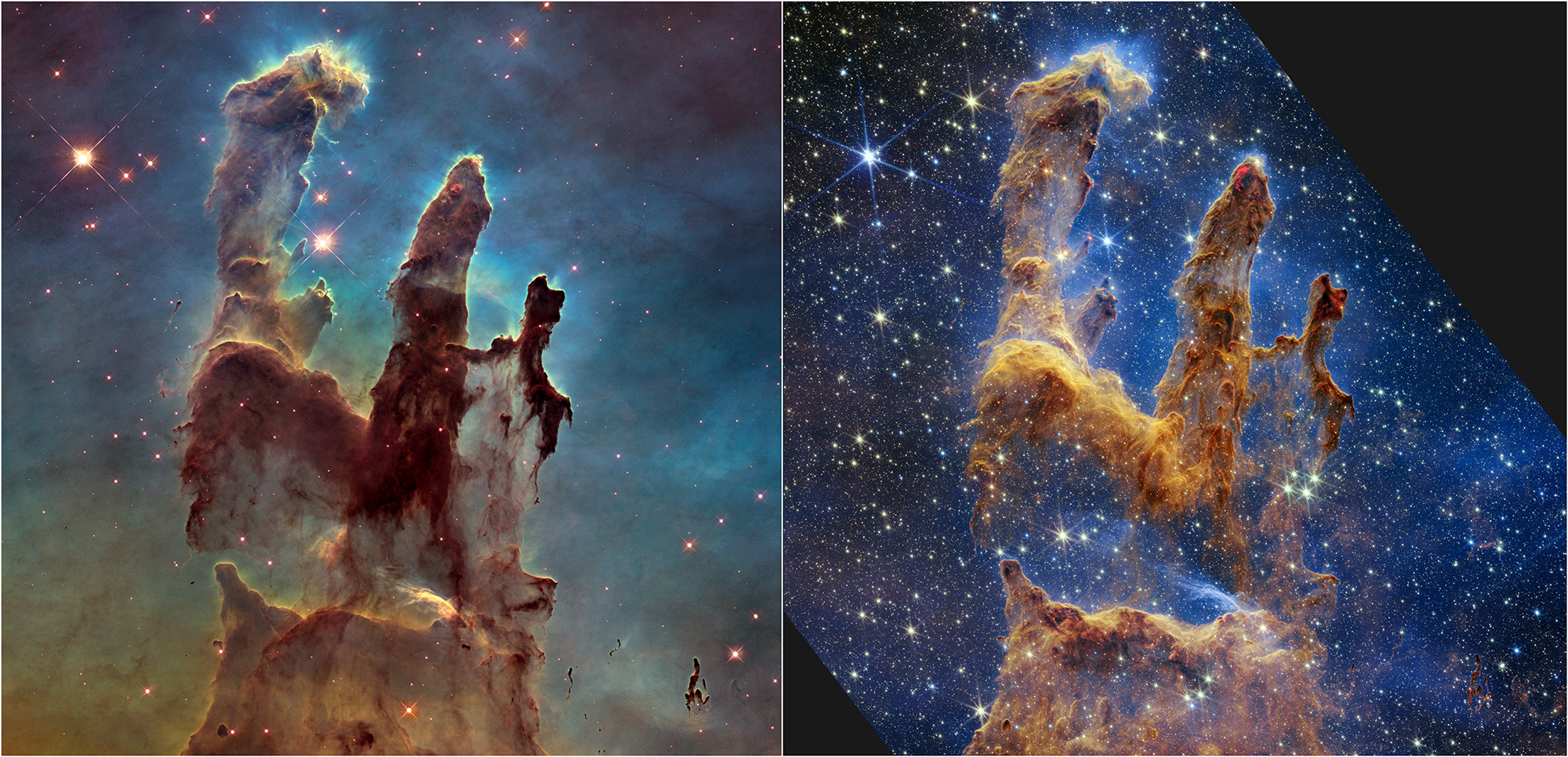The Webb Space Telescope
The James Webb Space Telescope was launched on Christmas Day, 2021.
It reached it’s resting orbit in January 2022 and sent back it’s first image in July.
Since then, Webb has released dozens of deep space photos.
Here is My Webb Telescope Top Ten.
1. Uranus

Uranus: Credits: NASA, ESA, CSA, STScI. Image processing: J. DePasquale (STScI)
In 1986, the Voyager 2 spacecraft discovered the thin, dusty rings of Uranus.
Webb’s infrared cameras show the rings much more vividly.
Uranus moves around the Sun on its side, at an angle of nearly 90 degrees to the plane of orbit.
So one pole of the planet is facing the Sun.
There Webb shows a bright area, like a polar cap.
This bright area appears when that pole is facing the Sun.
Other Markings are storms. Webb shows that Uranus has a dynamic atmosphere.
Uranus is an ‘ice giant’ planet.
It has a rocky core and a thick atmosphere of ices – water, methane and ammonia ice.
2. Exoplanet
In 2017 the European Southern Observatory’s Very large Telescope discovered a planet orbiting a distant star.
Catchily named HIP 65426b, the planet is around 10 times bigger than Jupiter.

Exoplanet: Credit: NASA/ESA/CSA, A Carter (UCSC), the ERS 1386 team, and A. Pagan (STScI).
Webb took images of the exoplanet at four different infrared wavelengths.
Then came the clever bit.
The parent star, HIP 65426, is 10,000 times brighter than the planet.
That’s so bright, it’s light obscures the planet.
But gradually the astronomy team managed to remove the starlight, replacing it with a small star symbol.
Planet HIP 65426b appeared like computer magic.
It is Webb’s first direct image of another world in orbit round a distant star.
No doubt many more will follow.
3. Pillars of Creation

Credits: NASA, ESA, CSA, STScI; Joseph DePasquale (STScI), Anton M. Koekemoer (STScI), Alyssa Pagan (STScI).
One of the Hubble Space Telescope’s most famous pictures was the Pillars of Creation.
It’s a huge cloud of gas and dust where new stars are being created.
The Webb telescope has looked at the pillars in infrared light.
The Hubble image is on the left, Webb’s is on the right.
The new view shows the pillars are semi-transparent in infrared.
The edges of the clouds show wavy lines.
These are ripples of energy from newly forming stars.
Comparing the images shows how Webb’s infrared light can penetrate further into space than visible light.
4. Phantom Galaxy

Phantom Galaxy: ESA/Webb, NASA & CSA, J. Lee and the PHANGS-JWST Team
The Phantom Galaxy, M74, lies in the constellation Pisces.
It is 32 million light years away and contains 100 billion stars.
An astronomer at the European Space Agency said that
‘”Webb’s sharp vision has revealed delicate filaments of gas and dust in the grandiose spiral arms which wind outwards from the centre of this image.
A lack of gas in the nuclear region also provides an unobscured view of the nuclear star cluster at the galaxy’s centre”.
5. Most distant galaxy

Credit: NASA, ESA, CSA, STScI, B. Robertson (UC Santa Cruz), B. Johnson (CfA),
S. Tacchella (Cambridge), P. Cargile (CfA)
Astronomers used this NIRcam image of distant galaxies to measure their spectral redshifts.
This gives a measure of the distance of these star cities – and their cosmic age.
It is part of the James Webb Space Telescope Advanced Deep Extragalactic Survey (JADES).
A galaxy code-named JADES GS-z14-0 came up with a redshift of 14.32.
This makes it the most distant galaxy found so far.
It was formed only 300 million years after the Big Bang.
Look at the image again. Look at JADES GS-z14-0.
The light you see left that young star city some 13.5 billion years ago!
So how far can we see into the universe?
With the James Webb Space Telescope, we’re looking almost to the beginning of the universe.
Coming Soon

You will have noticed that I’ve not completed the Webb Top Ten in this blog.
The rest are coming soon. Watch this space!

The author: Dennis Ashton is a Fellow of the Royal Astronomical Society and a Wonderdome presenter.
In 2024, Dennis received the Special Contribution award from the British Association of Planetaria.
Would you like to hear more Astronomy news?
Do you want to to find out about our upcoming public events?
Follow WonderDome Portable Planetarium on Twitter and Facebook or go to our web site wonderdome.co.uk

